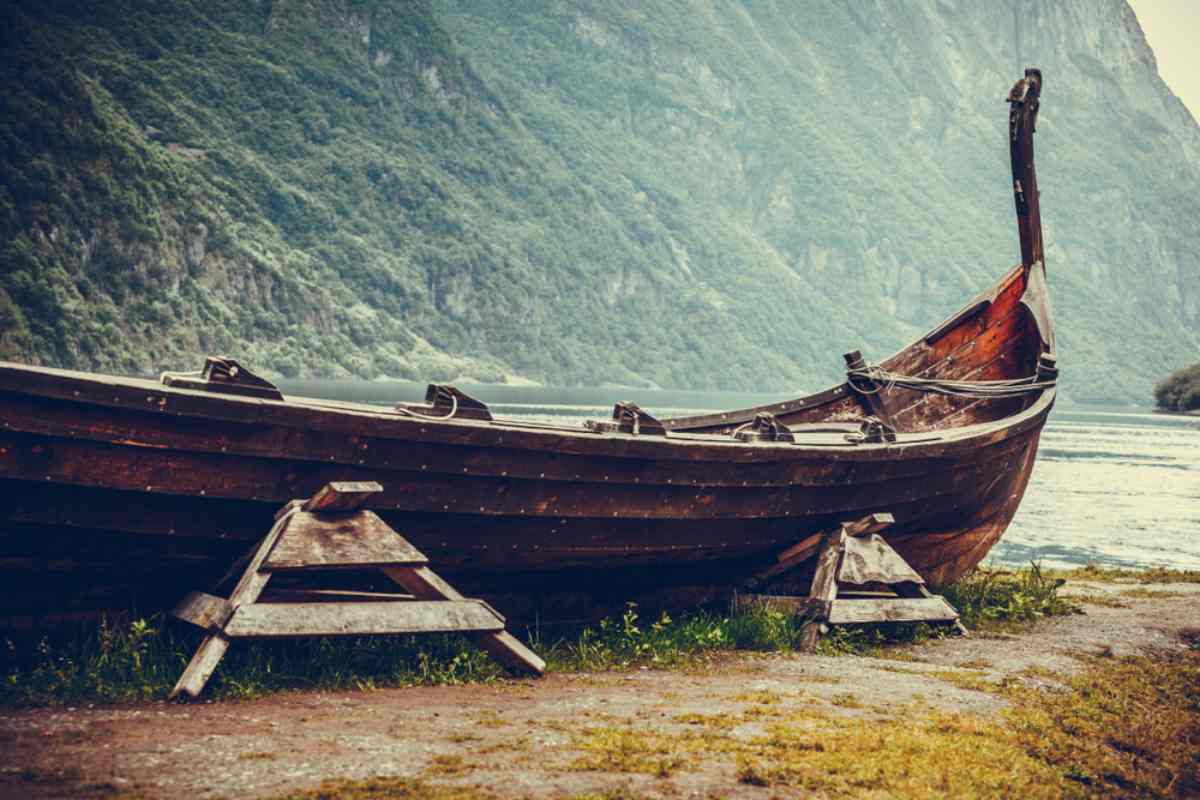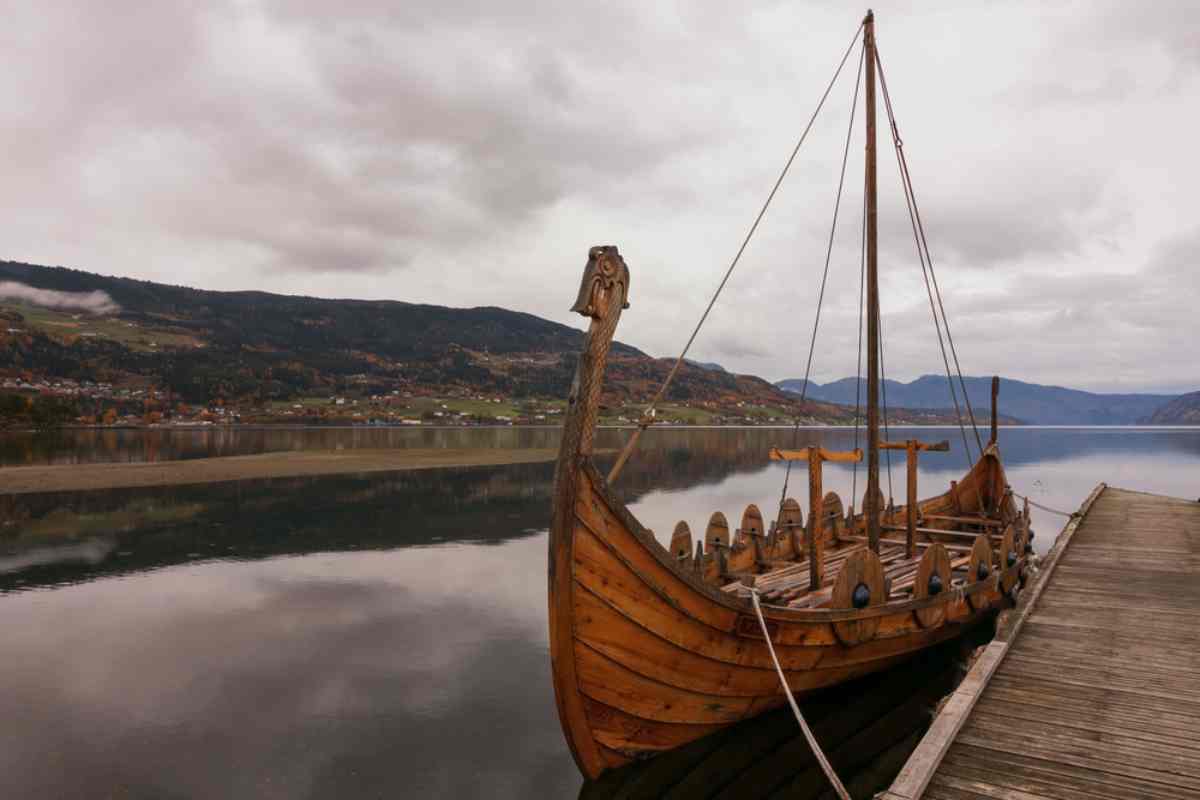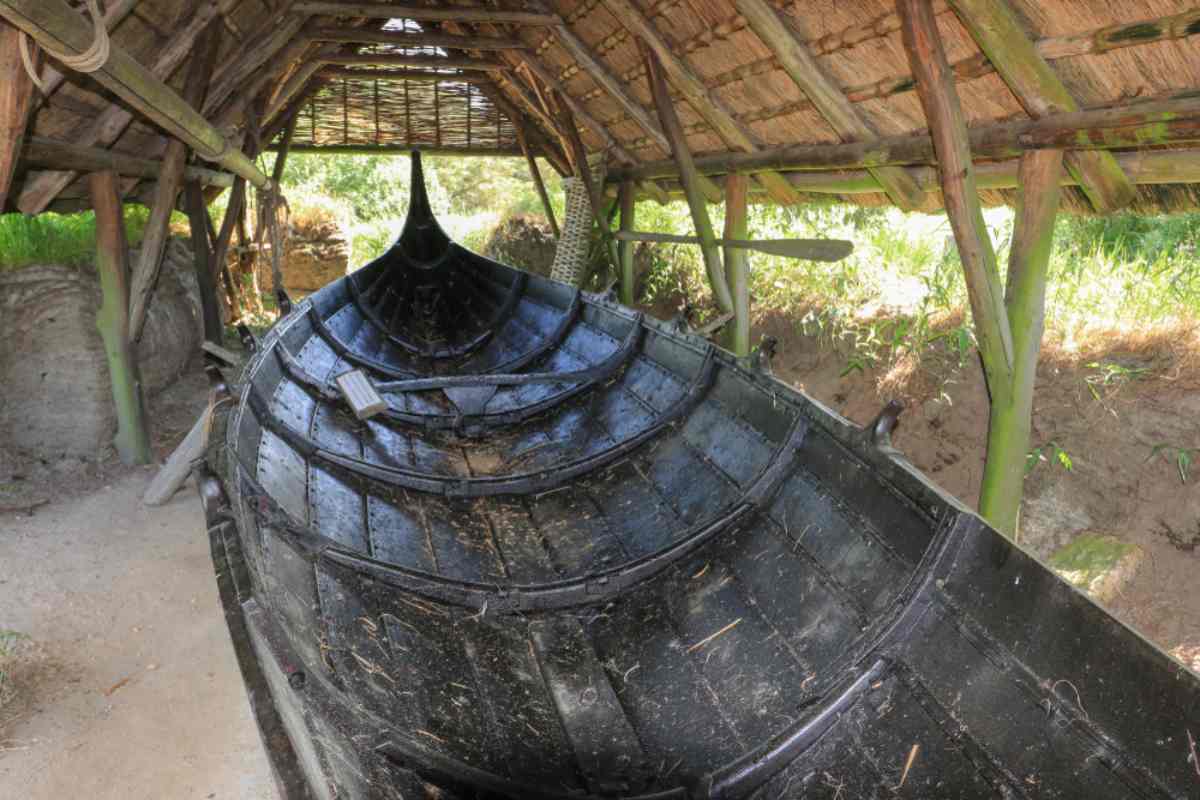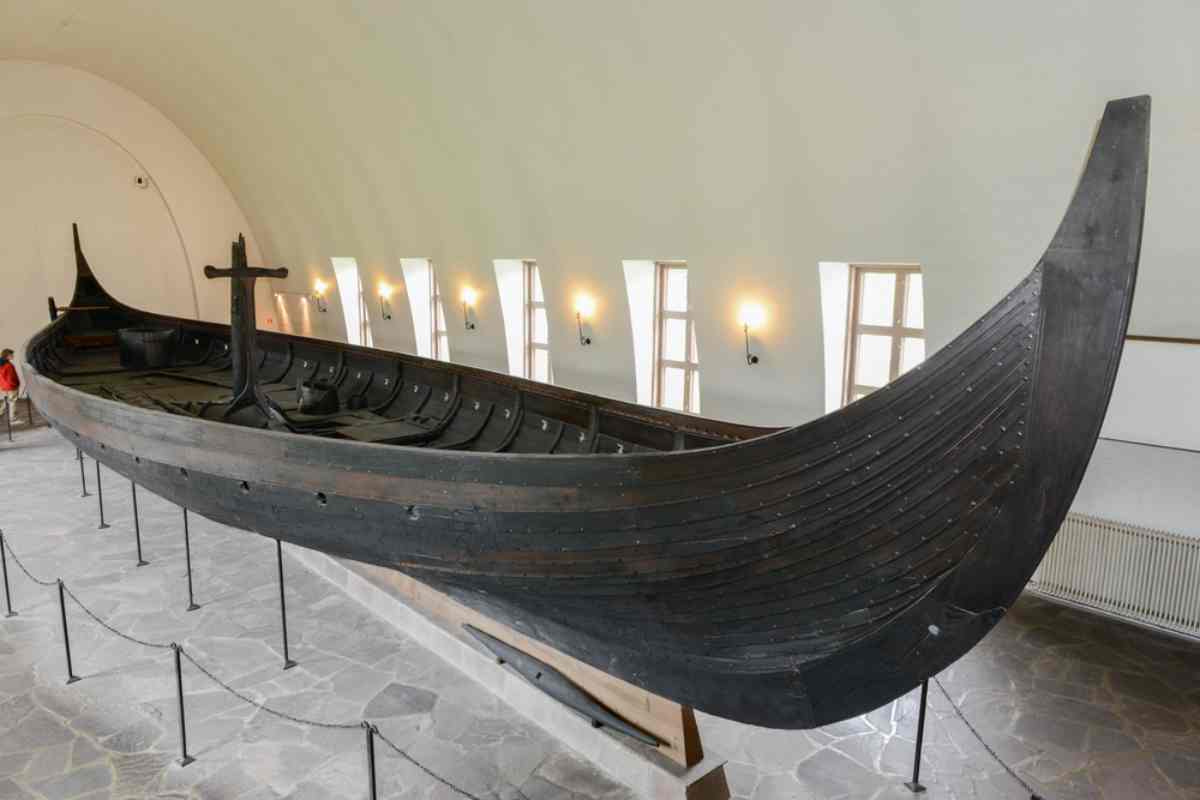The Icelanders are very proud of their Viking roots and their deep connection to the sea. But as interesting as the legends surrounding the Vikings are, just as impressive are the Viking ships that took them on all their adventures.
In this article, we take you back in time to learn about the ancient Viking ships, the different types, and what they were used for, as well as answer all your curious questions about these notorious vessels.
Viking Boats’ History; Taking a Look at Their Origins
As the term Viking ships already allude to, these boats were built during the Viking Age (790-1100) by the Scandinavians. They were a seafaring nation, from living off the ocean to trading goods and, yes, the infamous raiding and pillaging. But these vessels needed to be able to take on various bodies of water since the Vikings had to not just sail the oceans but also the rivers, lakes, and fjords.
The early Viking ships were not as specialized, and what can be gathered from research done during the excavations of the Gokstad, Oseberg, and the Tune (some of the earliest Viking ships that have been discovered) is that they were used for everything and anything – from basic transport to extreme warfare. It was only in the 9th century that Viking ships turned the tide, and the Viking ship’s design became an integral part of the role that it would play.

The Different Types of Viking Ships
The Vikings built Different types of ships for very specific purposes. These were:
The Viking Warships (“Langskip” aka Longships)
Those who have always envisioned the mighty Viking warriors cruising the seas in massive boat beasts will be surprised to know that the Vikings weren’t the simpleton horned brutes they are so often depicted as on-screen (in fact, they never even had any horns on their helmets, but that’s a story for another day).
The Vikings were very cunning strategists, and their warships were made as long and as narrow as possible. This meant that their ships could enter places that normal boats could not, and the boats could drop their passengers at strategic vantage points in a country where locals would least expect anyone to disembark. It also made quick getaways possible.
To further increase the speed of the boats, they used both sails and oars to maneuver these vessels. It is this type of clever thinking that made the Vikings such a force to be reckoned with and not just brute strength and excessive violence as so often thought. When it comes to Viking warships, there are 3 different types with very distinct features:
- Skeidar – Boats that were exceptionally long and narrow.
- Snekke – Boats that were slightly smaller than average.
- Drakkar – Boats that had serpent or dragon heads.

The Viking Merchant Ships
As can be expected, the Viking merchant ships had a much larger carrying capacity for their cargo. To maximize capacity, they ensured that only a small team was needed to man the boat and work the sails. The Vikings created two distinct designs when it came to their merchant ships:
- Knarr – Big and extra durable to carry heavy freight. These boats could be up to 16.5 meters long and carry up to 40 tons of cargo.
- Byrding – Slightly smaller and lighter. These boats were used to travel routes that could get pretty narrow, had shallow and rocky areas, or had other obstacles in the way that made easy maneuverability a top priority.
What made these long trading trips of the Vikings so impressive is the fact that the Vikings did not use any charts, compasses, or logs to navigate the seas but rather relied on the stars and the sun, as well as the cloud, waves, and wind patterns to navigate their route.
The Viking Small Boats
These, by far, made up the majority of Viking ships, and for good reason – these vessels were consistently used in the Vikings’ everyday life, whether it was to bring news to a neighboring village, transport locals up and down the coastline, or other bodies of water, or go out fishing.

FAQs About Viking Ships
Below are the answers to some of your most frequently asked questions about Viking ships:
What Were Viking Ships Made From?
Viking ships were made from wood. The planks were overlapped and then riveted together. All the wood that was needed to build these ships was partly the reason why Iceland was almost completely devoid of any trees for a very long time.
What is a Viking Ship Called?
The question as to what Viking ships were called is not so simple. Most would simply reply with ‘longship’, but that merely refers to the general term used for just one type of Viking boat. Depending on the design and the purpose of the ship, it could be called anything from Skeidar, Snekke, and Drakkar to Knarr and Byrding.
Why Were Viking Ships Called Longships?
Viking longships are long and narrow – it’s as simple as that. This is one of the best examples of giving something a name that describes it perfectly.
What is the Most Famous Viking Warship?
The most famous Viking warship is probably the Gokstad ship. It was found and excavated on the shores of Oslofjord in 1880, and today it can be found in Norway’s Viking Ship Museum.

What was the Largest Ship in the Viking Age?
In general, the largest ships were the merchant ships, since they needed lots of space for their precious cargo. But if you’re focusing on the largest ship ever to be discovered from the Viking Age, it would be Roskilde 6.
This Viking ship was found in Denmark’s Roskilde Fjord and measures a staggering 37 meters long! This is especially impressive when taking into account that it dates back to 1025 when boats were still built by hand, and tools were not nearly as sophisticated as they are today.
Viking Ships; Impressive Boats for an Impressive Nation
As you can see, Viking ships were an integral part of Viking life – whether it was making a living, making a trade, or making war. And whilst the shores of Iceland are no longer lined with Viking ships taking you on all sorts of adventures, there are plenty of places you can visit here on the island that will transport you back in time to the Viking Age.
So rent a car in Reykjavik and start living your best Viking life by taking part in an authentic Viking feast at the Viking village, get dressed up in traditional garb and gear and have your Viking portrait taken at Mink Studios, and follow in the footsteps of Leif the Lucky and visit a Viking longhouse in Eiriksstadir. Whatever you choose to do, your Iceland Viking adventure is just a short drive away here on the island.


 By
By



